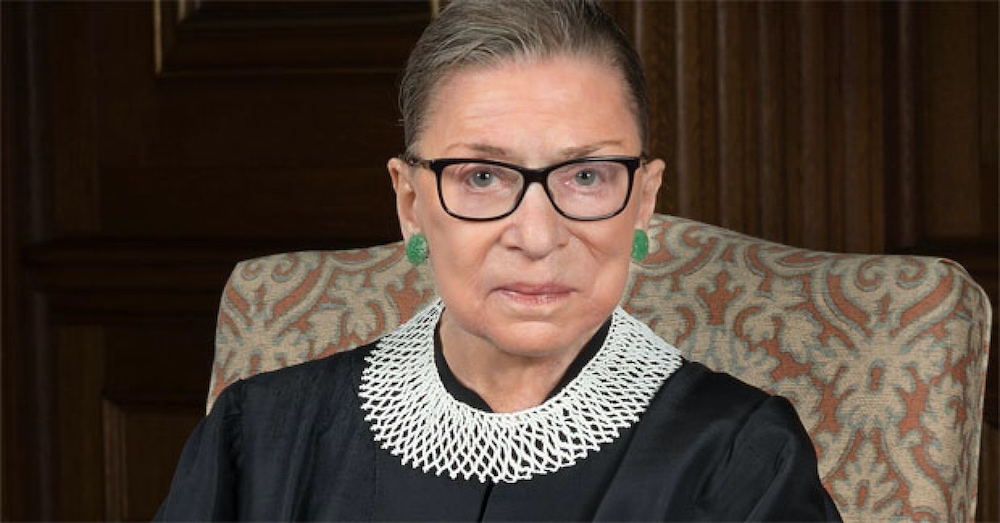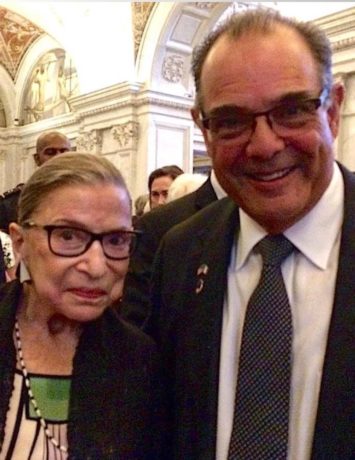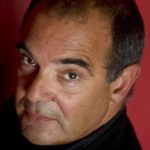“And though she be but little, she is fierce.”
~W. Shakespeare
She was a giant.
Borrowing from what was said at Lincoln’s passing, “Now, [s]he belongs to the ages.”

Along with her victories for women and equality, Ruth Bader Ginsburg will be remembered as a great supporter of the arts, particularly opera and the theater. She was a regular patron to Washington stages, and officiated at the weddings of both Michael Kahn and Molly Smith.
I first met Justice Ginsburg in 1996, when she joined other Justices to play cameos in productions at the Shakespeare Theatre Company. This particular year we were giving our Henry VI. Justice Ginsburg appeared as a small part in the Cade Rebellion scene and with that Newyorkese schoolmarm voice said the immortal words “The first thing we do, let’s kill all the lawyers.” She brought down the house, and as the applause was waning, she adlibbed, “And after that, all of the reporters.” She had performance chops.
After my character, the Duke of York, was killed off, I retreated to the greenroom at the Lansburgh, and there she was, all alone at the table, while actors were lounging around in typical varying stages of undress attempting to behave normally. I couldn’t resist the opportunity to chat. I had read in the Post that there had been some last-minute stay of execution by the Supreme Court that week, so I approached the Justice and said, “Excuse me, Justice Ginsburg, I hope I am not disturbing you, but what is the procedure for these kinds of stays of execution I read about this week? You don’t convene at night to consider these requests, do you?” I suppose I appealed to the professor in her. She said, “No, we do it by fax,” and then launched into a conversation about the Court schedule and other behind-the scenes insights, with all of the actors now gathered around (and at her feet) in a private seminar. It was an astonishing moment.

I met her again (this time at the Supreme Court), after having lunched in chambers with Justice Scalia for the first time as I prepared for The Originalist. I reminded her of our first meeting during Henry VI, and asked if she remembered what she said. “Of course I do!” She repeated both the Shakespeare and the Ginsburg jokes without dropping a beat. She then walked over to her bookshelf of photographs of her with Mandela, Maya Angelou, Bill Clinton, and she showed me the picture of her curtain call, with me next to her, holding her hand and lifting her arm, presenting her to the audience. It had remained on her shelf for those intervening 20 years. That event had meant as much to her as it did to all of us. I was humbled.
She came to see The Originalist four times. The first was during the premiere run. She sent me a lovely note saying that I had “captured the spirit of her dear colleague perfectly,” and looked forward to seeing me on the stage often. Fan mail from a patriot!
Then, a few months later, Justice Scalia died. She and I encountered each other at his funeral at the end of the service. The Supreme Court Justices followed the casket of their fallen colleague out of the National Shrine of the Immaculate Conception. She wasn’t expecting to see me on the aisle, and if I thought I did not resemble her dear colleague Nino, when she saw me and gasped, as if she had seen a ghost, I wept with certainty. We shared a real moment of vulnerability. We took a step towards each other in what felt like an impulse to comfort one another, then she stopped short. She took a breath, pulled herself together. We nodded to each other, and she continued on.
Two years later, she came again, this time to do the first of two post-show interviews on the stage. This was at the Arena during our encore run, the second in NYC during the Off-Broadway run. On that first occasion she said, “I love this play and the idea behind it that people with very different views on important things can genuinely like each other.” She yearned for a more civil discourse.
In New York, she came the fourth and final time, and again spoke with Molly Smith on the 59E59 stage. It was during that brief interval after Justice Kennedy had retired and before the confirmation hearings for Kavanaugh began. When the subject of her own eventual retirement came up, she cited the example of Justice John Paul Stevens. “He stepped down when he was 90,” she said, “so I think I have about, at least five more years.”
That was two years ago.
Alas.
Now, as she showed me that moment in the Basilica, we must take a breath, pull ourselves together, and continue on.
It was a privilege to know her and to be known by her.
“O woe is me,
T’ have seen what I have seen, see what I see!”
~W. Shakespeare

Edward Gero has been acting since 1977, appearing at theaters across the country from New York, Los Angeles, Chicago, Florida, and Washington, DC. Known for his work with Shakespeare 1983, Gero has also performed in motion pictures, television, and narrated for Discovery Channel. He is a professor of theater for George Mason University’s School of Theater and Head of the Performance Area. He is honored to be a sixteen-time nominee and four-time recipient of the prestigious Helen Hayes Award, a nominee of the Joseph Jefferson Award, recipient of the OSS Congressional Gold Medal, and recipient of The English Speaking Union Award for Excellence in the Spoken Word. In 2015, he was named a Lunt-Fontanne Fellow at Ten Chimneys. edwardgero.com




